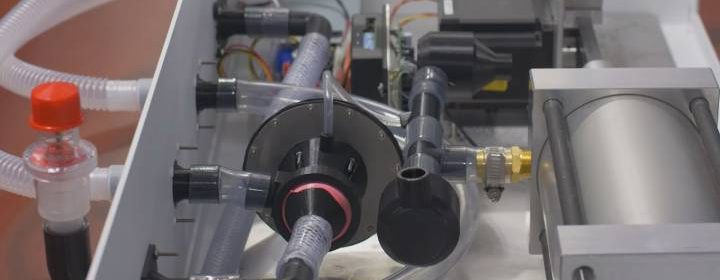Trump’s desire to be ‘king of ventilators’ may result in unexpected glut, experts warn

As requests for ventilators from the national stockpile reached a crescendo in late March, President Donald Trump made what seemed like a bold claim: His administration would provide 100,000 within 100 days.
At the time, the Department of Health and Human Services had not ordered any new ventilators since the start of the COVID-19 pandemic in January. But records show that over the following three weeks, the agency scrambled to turn Trump’s pledge into a reality, spending nearly $3 billion to spur U.S. manufacturers to crank out the breathing machines at an unprecedented pace.
An analysis of federal contracting data by The Associated Press shows the agency is now on track to exceed 100,000 new ventilators by around July 13, about a week later than the 100-day deadline Trump first gave on March 27.
By the end of 2020, the administration is expected to take delivery of nearly 200,000 new ventilators, based on the AP’s review of current federal purchasing contracts. That would more than double the estimated 160,000 ventilators hospitals across the U.S. had before the pandemic.
“We became the king of ventilators, thousands and thousands of ventilators,” Trump boasted in an April 29 speech.
But over the past month, demand for ventilators has decreased even as the U.S. death toll from the novel coronavirus has surged past 75,000. After observing unusually high death rates for coronavirus victims who were put on ventilators, many doctors are using them only as a last resort.
That’s raising the unexpected prospect that the United States could soon be awash in surplus ventilators, so much so the White House is now planning to ship thousands overseas to help boost the virus response of other nations.
[ Sign up for our Health IQ newsletter for the latest coronavirus updates ]
Daniel Adelman, a professor at the University of Chicago Booth School of Business who teaches health care analytics, said the U.S. government is now buying more than twice the number of ventilators it needs, even under a worst-case scenario forecasting the spread of COVID-19.
“It seems incongruent with the forecasts that you’re seeing,” Adelman said of the government purchases. “I’d probably rather they order too many rather than ordering too few.”
The Strategic National Stockpile, the federal government’s emergency reserve of medical supplies, had about 16,660 ventilators ready to deploy at the start of March. But as the pandemic intensified, health officials and governors in states with the worst virus outbreaks began expressing concerns that the supply of breathing machines could run out, potentially leaving thousands of critically ill patients gasping for air.
On April 8, HHS announced it had reached a $489.4 million deal with General Motors to produce 30,000 ventilators by the end of August. HHS then announced a $336 million contract with Ford and General Electric to make 50,000 ventilators by July 13.
Assuming all the companies meet their deadlines, AP’s analysis shows the national stockpile should surpass 100,000 new ventilators by mid-July. The agency will spend more than $2.9 billion for 198,890 ventilators by the end of 2020, an average per-unit cost of $14,618.
Whether that’s a good deal for U.S. taxpayers is difficult to determine because medical device makers generally don’t publish their prices. AP found several instances where the U.S. government had purchased the same models of ventilators before the pandemic. For example, contracting data does show that in December the Department of Defence bought a single, portable ventilator from Zoll Medical for $12,260.
Under its current contract with Zoll, HHS is purchasing 18,900 of the same model for slightly more than $350 million. That works out to about $18,500 each, which would be a more than 50 per cent increase from what the Pentagon paid less than five months ago.
A HHS spokeswoman said Friday the government was paying about $12,100 for each ventilator, and that the additional money was for hoses, face masks and other related supplies needed to treat COVID-19 patients. The ventilators also came with a wheeled plastic case with power port, which cost an additional $722 each, according to HHS.
With nearly 200,000 new ventilators set for delivery to the federal stockpile by the end of the year, Trump is declaring victory. But it is now unclear whether the stockpile of new ventilators will be needed.
A series of new medical studies has spurred questions about whether ventilators are effective at saving the lives of critically ill COVID-19 patients, causing doctors to reevaluate their use in favour of less intensive forms of respiratory support.
With ventilators to spare, Trump said he now intends to ship thousands overseas.
“We’re giving thousands and thousands of these ventilators away to many countries that have suffered greatly,” Trump said Friday. “Tremendous problems all over. And so they’re very happy.”
Source: Read Full Article
